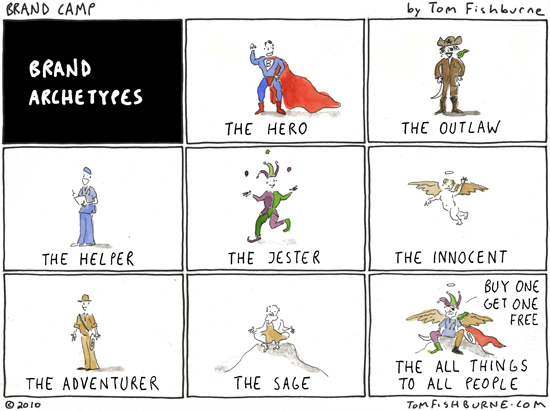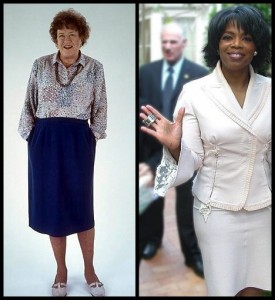The Importance of Tone in Business Writing (And How to Use It)

Tone is fairly easy to convey vocally; for example, people raise their voices when they’re angry and combative. It’s a bit trickier to express tone in writing.
When communicating with other people through business writing, your message is made up of two factors: what you say and how you say it. Even the most basic of messages can be muddled if you deliver them with the wrong tone. Ask anyone in a long-term relationship; who hasn’t gotten into an argument because their tone of voice was misinterpreted?
Conveying tone verbally is relatively easy; you might yell if you’re angry or use dramatic inflection if you’re being sarcastic. However, conveying tone in business writing isn’t as easy since you don’t have the luxury of pitch and timbre to get your point across. Instead, you have to rely on a number of different techniques to make sure your intent comes across clearly and that your tone is dynamic enough to keep your reader entertained.
The Basics of Tone
The different types of tone you use in your writing are dependent on several different factors–the basic building blocks of all communication.
- Audience – Tailor your tone to appeal to the people you’re writing for. For example, you’d use more slang and humor in your copy if your brand was trying to specifically target college students. Something targeting an older, more sophisticated demographic would be straightforward and direct.
- Message – Think about the actual content of your writing and which types of tone are most appropriate. If you were trying to promote a new product, you’d use exciting and energetic language. On the other hand, an apology for a recalled item would use a more serious tone.
- Medium – Consider where your writing will actually appear. A post on a social media platform would be casual and conversational, while a press release would be more professional and informative.
These factors help to create the basic blueprint for a tone that makes your business writing more effective, but it’s not something you can calculate like a math problem. To truly bring your writing to life, you must give it its own personality.
Creating a Personality for Your Business Writing
Your tone gives your writing some personality, which in turn gives your brand a personality. Not only does this make your copy more engaging, it allows the consumer to feel emotionally attached to your brand. Presenting just the facts alone will leave all of the purchasing decision power to the consumer’s brain. However, present these same facts with a unique tone and you’ll move that decision power to the consumer’s gut, where they’re much more likely to act without hesitation.
The easiest way to establish unique types of tone in writing is by having a unique brand. If you have a strong brand identity, you can translate many of those ideals into your copywriting. If you’re not sure about those details, it might be a good time to put together a brand “bible” and establish your identity. Once you know what your brand is all about, try taking these qualities and creating a “character” that embodies your brand. Your brand could be the young, hip, eco-friendly college student, the authoritative yet welcoming professor or even a mix of both: the fun but passionate teacher’s assistant.

Developing your brand into an identifiable “character” makes it easier to find your unique tone.
Photo Credit: Tom Fishburne
Creating a character makes it easier to think about how your brand would speak if it had a mouth–or more importantly, how it would write if it had fingers. Of course, if you are your own brand, then you already have the perfect character to match your tone: yourself. Think about the way you speak, the words you use, how you gather your thoughts and even the jokes you like to tell; pepper all of these into your copywriting.

To make a distinct tone, you have to look at the details. Both Julia Child and Oprah are friendly, but they also have tonal differences: one is humble and the other is outgoing.
Photo Credit: Wikipedia
Adding Tone Variables
Generic tone breeds generic results, so add as many variables as possible to establish pitch-perfect tone in your copywriting. For example, you might decide that your brand is “authoritative yet friendly,” but there are thousands of different ways to express that in tone. Julia Child and Oprah Winfrey are both “authoritative yet friendly,” but they have unique individual qualities as well. Julia was knowledgeable and humble, while Oprah is confident and outgoing.
This little distinction might seem insignificant, but it makes all the difference in the world when it comes to copywriting in your own unique tone. It’s not enough to decide to add humor to your writing–you have to decide whether that humor is going to be goofy, witty, sarcastic, weird, self-deprecating and so on. On the flip side, a serious tone could be formal, conversational, imperative, apologetic and so on.
It’s okay to have multiple brand personality variables. For example, your brand might be informal, fiery, bold and sarcastic with strong family values, maternal instincts and a love for southern colloquialisms. If your brand represents your company’s unique fingerprint, then your tone should be your company’s unique voice.
Putting it All Together
Now that you know all the steps for creating your own unique tone, let’s see how the process works in action. For this example, we’ll use a fictional sushi restaurant, Nippon Sushi, in a small college town. The restaurant wants to promote its weekday sushi specials to the college student demographic; to do this, they have decided to send out mailers to the dorms.
Right off the bat, we know the audience, the message and the medium and we can begin to develop a tone around these facts. The message will have to be clear, concise and creative enough to compete for a college student’s attention.

Meet Suki Sushi, the brand persona for our example sushi restaurant. Suki is a health-conscious, adventurous, trendy young Japanese-American woman who personifies the idea of sushi.
With those details in mind, we can create a brand personality for Nippon Sushi that will set the tone of their copy. To tie into the cultural heritage of sushi, the personality will be a young Japanese-American woman around the same age as the target demographic. We can incorporate aspects of the product itself into our brand personality. Sushi is known for being a healthy food that’s trendy and fun to eat with friends, therefore our brand personality is a health-conscious social butterfly who likes to keep up with what’s new.
To overcome some of the challenges of getting new customers to try sushi for the first time, we’ll make our brand personality a little bold, adventurous and daring. However, to appease those in the audience who already love sushi, we’ll also make her a foodie who knows it’s important to treat yourself to good cuisine every now and then.
With our persona in place, we can start to write copy using the right tone for the audience, the message and the medium. Our mailer might read something like this:
Do your taste buds crave something more exciting than cafeteria food? Is your waistline suffering from a pizza overdose?
Nippon Sushi is the solution! We’re serving up fresh, authentic Japanese cuisine that’s way more exciting than that cup of bland noodles you were about to warm up.
Join us for our weekday specials:
Edamame Mondays – Enjoy this healthy soybean snack on the house. Bet you can’t eat just one!
Tuna Tuesdays – Think buffalo wings are spicy? Wait till you try the fiery flavor of our half-off spicy tuna rolls!
Veggie Wednesdays – Vegans, we got your back. Buy one, get one on all our veggie rolls.
10% Thursdays – Take a break from studying and get 10% off your entire order with a valid student ID.
Facebook Fridays – Wanna know what the new special is this Friday? You’ll have to like us on Facebook to find out!
Conclusion
Remember that tone isn’t something that happens overnight and you can only get better with practice. Try writing some examples of tone in business writing to strengthen your identity. Seek out feedback from others to flesh out your voice. Every time you set out to write something (whether it’s a blog post or a text message), you’ll become more adept at hitting the right tone every time.
Posted in Copywriting
Don`t neglect your friends, share this right away.





Leave a Reply